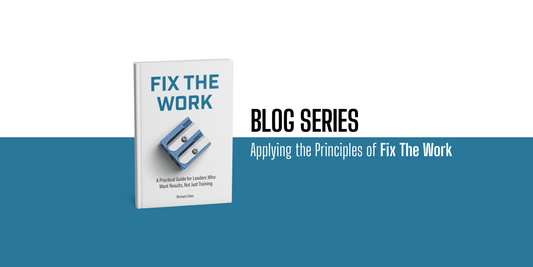30 Blunt Truths About Training and Performance
Richard SitesShare This Post
Let’s skip the thought leadership. You’ve seen the patterns:
- The “urgent” request with no owner.
- The course that ships too late to matter.
- The solution no one reads but everyone signs off on.
We don’t need more frameworks. We need fewer delays, less noise, and better decisions.
These are the 30 truths we use to fix broken projects, kill fake urgency, and build tools that actually get used.
If you’re part of a learning team, ops team, or just someone who wants results over rituals—this list is for you.
Here’s the full set:
- Indecision isn’t neutral.
- No sponsor? No project.
- A great course launched too late is fake help.
- Fix the problem not your portfolio.
- Useful beats original. Every. Damn. Time.
- Build what’s missing, not what’s impressive.
- Drift is failure—just with better manners.
- If a checklist would work, stop right there.
- Every extra layer adds drag.
- Complexity is cost. Simplicity is speed.
- You can’t improve what doesn’t exist.
- “Ready” is a myth. Ship the rough cut.
- Silence kills trust faster than bad work.
- Relevance has a shelf life.
- Momentum > alignment.
- The LMS is not your learner.
- Enthusiasm without authority is a trap.
- If no one owns it, it’s not real work.
- More time = more second-guessing.
- Speed isn’t reckless—it’s respect.
- Done is data. Done is power. Done moves.
- A process never fixed an engagement problem. People do.
- If you can’t explain it fast, it’s not worth building slow.
- Quality isn’t a vibe—define it or stop chasing it.
- People are the multiplier. Your system is just the math.
- If your team doesn’t trust the build, neither will the business.
- A good design isn’t a good reason.
- Don’t let a training gap become a business wound.
- Don’t dress a business problem in training clothes.
- Tech won’t save a bad call.




